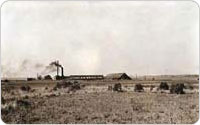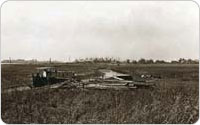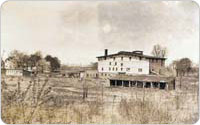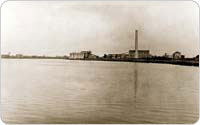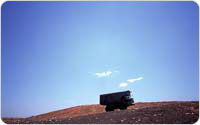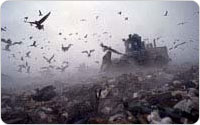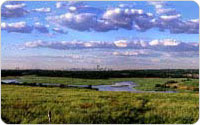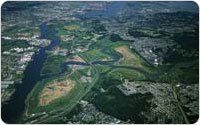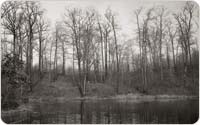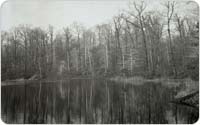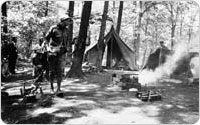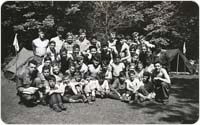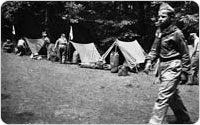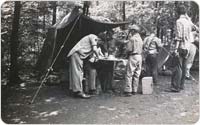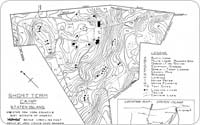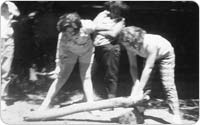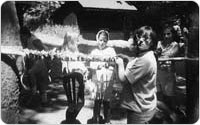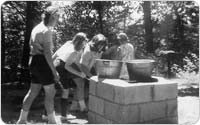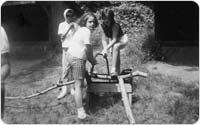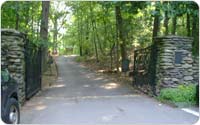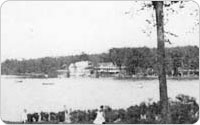Before They Were Parks
Pick any public park, and it has a story to reveal about what it once was and how it came to be. It may be lush and green now, but at some point in its past it might have been a warehouse, tenement, estate, reservoir, landfill, cemetery or jail. The route from private ownership to public amenity is typically long and arduous. Here we feature a fraction of the countless scenarios that have marked the city’s never–ending quest for parkland in a densely built metropolis.
An exhibit on this subject was on display in the Arsenal Gallery from June 23, 2010–September 9, 2010.
Select a borough:
Staten Island
Fresh Kills, Staten Island
Fresh Kills in its natural state was primarily tidal creeks and coastal wetlands. Formerly occupied by Native Americans, in the nineteenth century the area was primarily rural agricultural homesteads. When industrialization ramped up after the Civil War, small industrial towns were established to support industries such as brick and linoleum manufacturing. The city acquired the land in 1948 for use as a landfill, which was operated by the Department of Sanitation from 1948 to 2001. Refuse was transported there by barge and truck from nine sanitation transfer points distributed about the city, and at its peak about 29,000 tons of garbage were delivered each day. The tallest of four mounds rises approximately 200 feet above sea level. Following the collapse of the World Trade Center’s twin towers on September 11, 2001, the landfill was briefly reopened to serve as a recovery and sifting site for debris, before being permanently closed in preparation for its conversion to a public park.
Click on an image to view a larger size and more information
High Rock Park, Staten Island
Noted for its spectacular natural landscape that includes woods, lakes, and wetlands, the land that is now High Rock Park was once owned by various prominent families in the early nineteenth and twentieth centuries (including the Vanderbilts, Flaggs, Conners, Ebbets and Tonkings.) The Boys Scouts Council of Greater New York bought the property and operated a camp there from the 1930s until 1951, when they sold it to the Girl Scouts Council of Greater New York. In 1965 the Girl Scouts sold High Rock to a private developer, but through the efforts of local conservationist Gretta Moulton, and the intervention of a consortium of governmental officials and other concerned citizens, High Rock was designated a city park in July of 1965 and the High Rock Nature Conservation Center opened to the public. An additional five acres was added in 1988. In 1971 the U.S. Department of the Interior named High Rock a Natural Environmental Education Landmark, and a walking trail and gateway were named in honor of Moulton in 1995. Today it is part of the Staten Island Greenbelt, and hosts the Greenbelt Conservancy’s headquarters where many environmental education programs and events are held each year.
Click on an image to view a larger size and more information
Mariner's Marsh Park, Staten Island
The area around Mariner’s Marsh Park was once dominated by industrial development. The Milliken Brothers' Structural Iron Works and Rolling Mill built its plant on the site of the park in 1903. Milliken Brothers was once one of the world's largest manufacturers of steel products. In 1917, the plant was converted to Downey's Shipyard, which, needless to say, was bustling with activity as a result of World War I. The park’s ten ponds are actually remnants of the site’s shipbuilding past: a system to get ships to the nearby Kill Van Kull necessitated exposing the area’s water table. The basins created to solve this problem became the ponds we see today.
Silver Lake Park, Staten Island
The original Silver Lake (currently the south basin of the reservoir) was a spring–fed body of water formed at the end of the ice age. During the nineteenth century, a casino and saloon existed on the lakeshore and several companies harvested ice during the winter months for use in homes and businesses. Once modern refrigeration made ice harvesting unnecessary, the lake was connected to the city water supply system, serving as the endpoint of the city’s Catskill water supply system from 1917 to 1971. Just before the site became a City park, in February 1897, Silver Lake hosted the National Skating Amateur Championship races.
Related Links
Parks History Historical Signs Capital Projects Park of the Month
